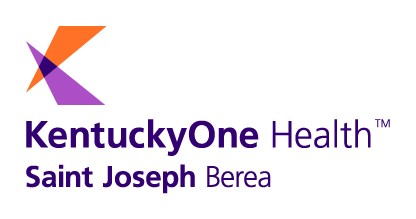Saint Joseph Berea Now Offering Low-Dose CT Screening - Archived

For More Information:
David McArthur, Senior Manager
502.562.7016 or 502.648.3411
[email protected]
Saint Joseph Berea Now Offering Low-Dose CT Screening
Low-dose CT more likely to detect lung cancer than traditional chest X-ray
Berea, Ky. (July 20, 2016)—Kentucky continually ranks among the worst places for lung cancer incidence and death. Saint Joseph Berea, part of KentuckyOne Health, now has a new tool available in fighting the battle against this deadly disease.
Low-dose computed tomography (low-dose CT), now offered at Saint Joseph Berea, is an important tool in early detection, as well as in reducing deaths from lung cancer. While a chest X-ray may have served as the previous method for detection, this new technology employs a low-dose of radiation to make a series of very detailed pictures of the lungs, scanning the body in a spiral path, giving doctors an incredible amount of detail and allowing them to see even the smallest cancer growth.
“This screening option is a tremendous step forward in reducing lung cancer deaths,” said Eric Gilliam, president, Saint Joseph Berea. “Low-dose computed tomography gives us more treatment options as we continue to fight this deadly disease.”
“Evidence shows that people who receive a screening have a lower chance of dying from lung cancer,” said Patrick Kelleher, MD, Berea Clinic of Internal Medicine. “It’s like getting a mammogram to detect breast cancer or having a colon cancer screening to prevent colon cancer. Early detection is a proven strategy for fighting lung cancer, and this tool is helping save lives.”
According to the National Comprehensive Cancer Network, the five-year survival rates for lung cancer are 16.6 percent, due in part to the fact that most patients have advanced stage lung cancer at initial diagnosis. Data shows that using low-dose CT is four times more likely to pick up a mass than a traditional chest X-ray, allowing for earlier detection and a better chance at survival.
Low-dose CT is recommended for adults ages 55 to 74 years old who currently smoke, have a 30 pack-year smoking history or who have quit the habit within the last 15 years. Pack-years are calculated by multiplying the number of packs of cigarettes smoked per day by the number of years the person smoked.
“While quitting smoking will always be the most important thing smokers can do for their health, this new technology is an additional tool being used to help the fight against lung cancer,” said Sandra Rose, director, ancillary and support services, Saint Joseph Berea. “Many insurance companies and Medicare cover this screening for high-risk beneficiaries, which is making this screening more accessible to patients, helping to catch lung cancer even more quickly.”
The incidence of lung cancer increases with age and occurs most commonly in those 55 years of age or older. The most crucial risk factor for lung cancer is smoking, which results in approximately 85 percent of all U.S. lung cancer cases.
In addition to age and smoking history, patients should have a discussion with their doctor on an annual basis to determine if screening is right for them. Patients are also encouraged to check the criteria of their medical coverage as it may differ between insurers.
About KentuckyOne Health
KentuckyOne Health, the largest and most comprehensive health system in the Commonwealth, has more than 200 locations including, hospitals, physician groups, clinics, primary care centers, specialty institutes and home health agencies in Kentucky and southern Indiana. KentuckyOne Health is dedicated to bringing wellness, healing and hope to all, including the underserved. The system is made up of the former Jewish Hospital & St. Mary’s HealthCare and Saint Joseph Health System, along with the University of Louisville Hospital and James Graham Brown Cancer Center. KentuckyOne Health is proud of and strengthened by its Catholic, Jewish and academic heritages.
Publish date:
Wednesday, July 20, 2016